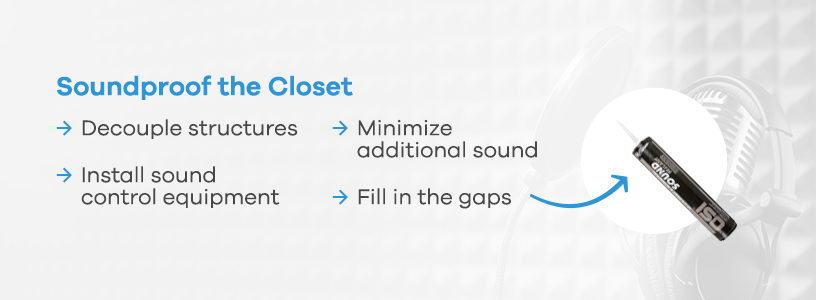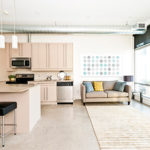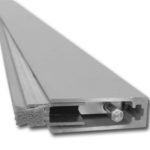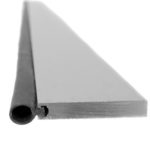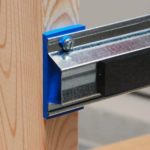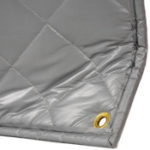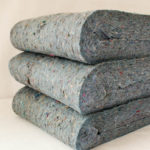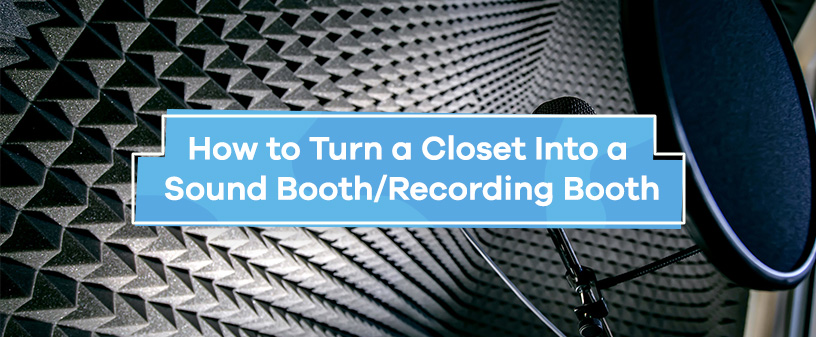
Whether you’re a YouTuber, podcaster, filmmaker or musician, you need a well-designed recording space to produce high-quality audio. But, because professional studio fees can reach up to $200 an hour, most freelance recording artists face a huge barrier to entry.
Fortunately, you can create your own recording studio right in the comfort of your own home. All you need is an open closet and your imagination.
Can a Closet Make a Good Recording Space?
While recording in a closet may not seem as glamorous as working from a professional recording studio, it can be a great option for anyone who needs to record high-quality audio on a budget. You can use any closet in your home as long as it comfortably fits your equipment and anyone who will record with you.
Before you set up your mic and workstation, though, you’ll need to make sure the space is ready for recording. Installing sound control equipment can help you create the right environment for producing high-quality audio, even on a limited budget. There are two types of sound control:
- Sound absorption: Sound absorbing equipment captures the energy from sound waves as they travel through space, reducing echo and excess noise so it’s easier to hear what you’re doing. Most sound-absorbing materials are soft and porous, such as foams, sponges and acoustic fiberglass.
- Soundproofing: Soundproofing equipment reflects sound waves to “trap” them within a space — so, for example, any noise you make in your studio will remain within the studio. This equipment is usually made from dense, sturdy materials like Mass Loaded Vinyl (MLV) and high-density foams.
Besides improving your recording quality, sound control equipment also makes your space look more professional. Let’s say you’re a freelance sound designer looking for your next gig. Producers are more likely to hire you if you seem to take your job seriously — and investing in the right equipment shows you do.
How to Turn Your Closet Into a Recording Studio in 3 Easy Steps
While building your own studio might seem like an ambitious project, it’s more doable than you might think. Here’s how to get started transforming your closet into a home sound booth.
1. Choose Your Closet
The first step in building a closet sound booth is getting your closet ready for action. Even a small broom closet can make a good recording studio as long as it can fit everything you need. It is important to note, though, that irregularly shaped closets with lots of shelving often require some additional work.
2. Prepare Your Space
Now that you know where you want to record, it’s time to get mooooving. Carefully consider what modifications you might need to make before you can begin recording, such as:
- Shelving: A walk-in closet recording studio with lots of shelving or clothing racks may need to be cleared out to make room for your workspace.
- Hard floors: Hardwood, cement and tile flooring reflects sound, which can impact recording quality. If you have one of these in your closet, you’ll probably need to add sound-absorbing elements to reduce echo and background noise.
- Walls: Soundproofing needs vary depending on whether your closet has insulated, solid or hollow walls.
- Power supply: Consider whether you have enough electrical outlets to support your audio equipment and computer. If you need additional outlets, you’ll want to contact an electrician.
- Lighting: Does your closet have sufficient lighting to inspire productive work? If not, you may need to purchase some lamps or invest in new fixtures for the studio.
3. Soundproof the Closet
Once you’ve got your space properly configured, all that’s left to do is set it up for recording by adding the right sound control equipment. The best materials for your space will depend largely on the room’s characteristics, as well as the type of audio you’ll be recording. For example, a musician will make more noise than the average podcast host.
Here’s a quick soundproofing to-do list:
- Decouple structures: If you can, separate structural components in direct contact with each other using isolators. Doing so reduces the transmission of structural vibrations, significantly reducing low-frequency sound waves from affecting your recordings.
- Install sound control equipment: Create an acoustic environment that meets your needs using a combination of sound-dampening and soundproofing equipment. You can support these pieces with items found around your home, like pillows, rugs and carpets.
- Minimize additional sound: Everything from AC units to the fan on your computer can add unwanted background noise to your recordings. Finding ways to reduce these sounds can assist your soundproofing efforts.
- Fill in the gaps: Sound can travel through openings in your walls, floors and ceilings, so finding ways to close up those gaps is essential for creating a truly soundproof environment. Materials like acoustical sealant are great for making these little fixes.
Best Soundproofing Materials for a Closet Recording Studio
Need some guidance on which sound control equipment you should purchase? We’re here to help you out. The following products are easy to install and suitable for any size recording closet:
- Acoustic panels: Our stylish acoustic panels deaden and absorb sound, helping improve recording clarity and providing eye-catching decorations for podcast and video recording studios.
- Door sweeps and seals: Your studio’s door lets more than people in and out — it also acts as an entrance for unwanted sound. Soundproofing tools like door sweeps and seals are nonintrusive and easy to install, making them perfect for home use.
- Quiet Barrier® acoustic quilts: Consisting of several layers of high-performance fiberglass acoustic blankets wrapped in a quilted vinyl coating, Quiet Barrier® temporary barriers are excellent solutions for closets. You can hang them up around your workstation to create sound curtains when it’s time to record and take them down when you need to use the closet for everyday things.
If you’re looking at a more labor-intensive project, we recommend:
- Floor joist isolators: Made from medium-density thermoplastic, our floor joist isolators reduce structural sound transmission by decoupling your flooring joists from your structural supports.
- IsoTRAX®: The combination of decoupling isolation rails and sound deadening pads helps to reduce structural vibrations and dampen unwanted noise. It’s important to note, though, that this system is designed to go inside your walls or ceilings — so it’s best suited to new construction projects.
- Quiet Batt®: Made from densely packed cotton instead of fiberglass, Quiet Batt® soundproofing insulation fits snugly between your studs — just like regular insulation. Its soft filling effectively absorbs vibrations, preventing sound from traveling in or out of your studio.
Build a Moo-Mentous Recording Closet With Soundproof Cow
At Soundproof Cow, we’re udderly honored to help you create a recording space you’re proud of. We carry a wide variety of sound control equipment, so you can count on us to get your recording closet ready for action.
Explore our website to learn more about our soundproofing and sound-dampening products, or get right to it and request a free acoustic analysis of your closet!



